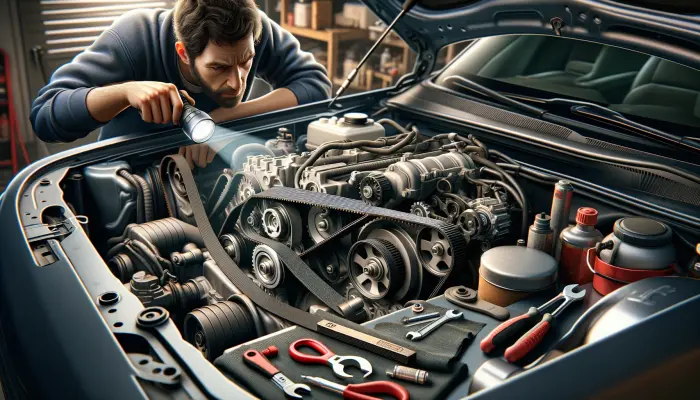Whistling of the generator belt is a common issue faced by many car owners. Let's explore whether it's necessary to immediately replace the belt when such a sound occurs under the hood, or if it's possible to fix the problem on your own, avoiding additional expenses for service and spare parts.
But does whistling always indicate belt wear? On forums and in conversations with auto mechanics, it's often said that whistling is a sign of belt wear, requiring replacement. However, in some cases, it may occur due to high humidity or incorrect installation of a new generator belt that is not sufficiently tightened by the tension rollers.
If whistling is regularly heard in your car, it's advisable to conduct diagnostics before buying new parts. Such problems usually arise when drivers, trying to save money, delay replacing the generator drive or buy low-quality parts, which wear out quickly, causing whistling and the need for replacement.
Alternative Causes of Whistling in a Car
Whistling in a car can be caused not only by the generator belt. It's important to consider other potential sources:
- Bearings: Worn bearings, especially in the cooling fan, air conditioner, or power steering pump, can make whistling sounds.
- Brake System: Faults in the brake system, including worn brake pads or discs, sometimes produce a whistle when braking.
- Ventilation and Heating System: Clogging or malfunction in these systems can cause whistling.
- Turbocharging: In cars with turbocharging, whistling may indicate problems with the turbine.
- Air Leaks: Damage in air ducts or loosely closed doors and windows can also be a cause of whistling.
Causes of Belt Whistling
Whistling of the generator belt can arise from various causes, including:
- Loosening of the belt tension;
- Wear of the rubber base or fabric coating;
- Wear of the generator bushings;
- Wear of the belt drive components;
- Oil, antifreeze, and other fluids getting on the belt. The whistling of the belt can be constant or only occur on a cold engine. In humid weather, even a functional generator belt can whistle due to the characteristics of its construction. Nonetheless, at the first signs of such a sound, it's recommended to visit a service center for diagnostics and repair.
Consequences of Generator Belt Whistling
Whistling of the generator belt may indicate wear or faults in the generator and belt drive, leading to serious consequences such as:
- Engine overheating and the need for major repairs;
- Critical breakdowns of the generator, requiring its replacement;
- Discharge of the battery due to insufficient charging from the generator;
- Difficulties in starting the engine with a discharged battery;
- Damage to the gas distribution system and other engine components;
- Increased risk of belt drive breakage.
What to Do with a Whistling Belt It's usually recommended to replace a whistling generator belt, while also changing the rollers and cleaning the pulleys. In some cases, the problem can be solved by adjusting the tension of the belt drive. If the generator is wearing out along with the belt, it should be dismantled, overhauled, and repaired.
Instructions for Self-Checking the Generator Belt
To self-check the generator belt, follow these steps:
- Preparation: Make sure the engine is turned off and cooled down. Open the hood and locate the generator belt.
- Visual Inspection: Check the belt for cracks, wear, delamination, or any damage. Pay attention to its overall condition.
- Tension Check: Press the belt with your finger. It should deflect by about 1-2 cm. If the belt is too tight or too loose, it can cause problems.
- Pulley Check: Ensure that the generator pulleys and other devices driven by it are in good condition and undamaged.
- Roller Check: Check the tension and idler rollers for wear and free movement.
- Engine Start: After checking, start the engine and listen for sounds. Whistling with the engine running may indicate issues not apparent during visual inspection.
If any signs of wear or damage to the generator belt are found, it's recommended to go to a service center for its replacement or further diagnostics.
Conclusion
Whistling of the generator belt is a frequent problem among car owners. There are many causes for its appearance, but most often it's wear of the drive, requiring replacement. Delaying repairs increases the risk of serious engine breakdowns and battery discharge, which will soon require replacement.
